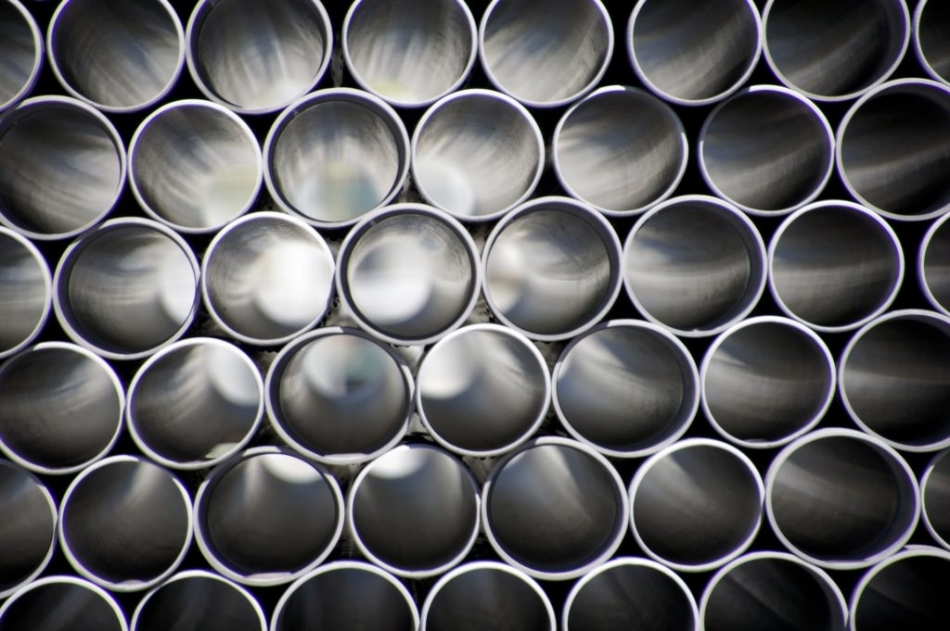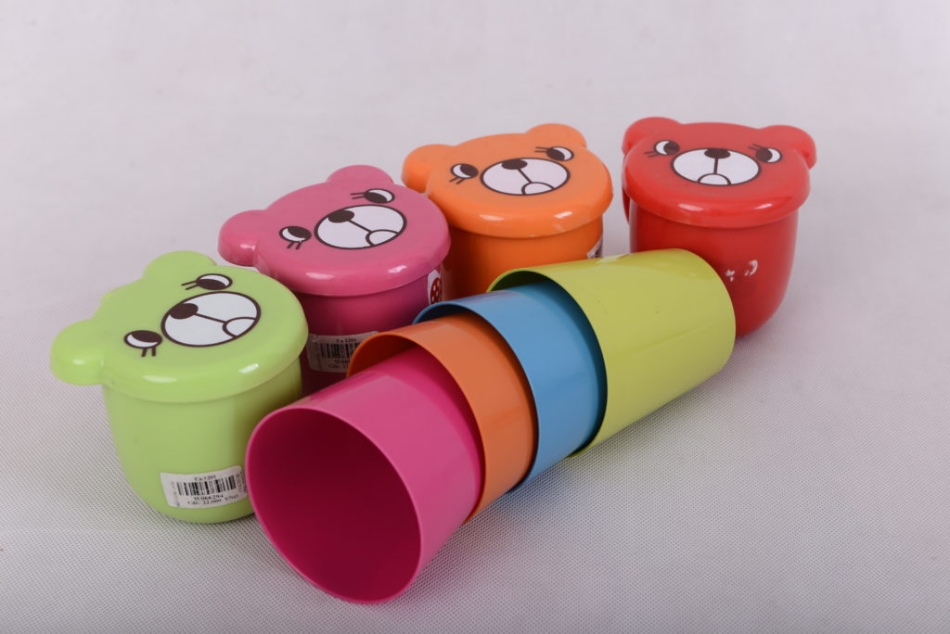The use of calcium carbonate filler as a cost-effective material solution has become more and more popular in the plastic industry. HD filler masterbatch is one of the most preferable ones thanks to its various applications.
HD filler masterbatch (also known as HD calcium carbonate filler) is a combination of HDPE resin, CaCO3 powder, and specific additives. The letters “HD” stand for “High density” - an identical characteristic of HDPE, which distinguishes it from LDPE. Though both come from the same ethylene monomer, the difference in chemical structure yields a wide variety of unique properties. While low-density polyethylene (LDPE) has a lower density, strength, and temperature resistance, high-density polyethylene (HDPE) is characterized by its higher specific strength and heat resistance.
Inheriting these advantages, HD calcium carbonate filler, therefore, offers end-products several benefits.
Read more: What is filler masterbatch and how it is applied to your production?
1. How does HD filler masterbatch benefit our end-products
One of the most outstanding advantages of HD filler masterbatch is its affordability. Compared with virgin resin, calcium carbonate is significantly more reasonable thanks to its large reserve worldwide. When being embedded into end-products, calcium carbonate filler will partly replace virgin resin, thus reducing the amount of required resin, which also means reducing production cost and improving product’s competitiveness.
So, the question is whether or not the use of filler masterbatch weakens end-products’ overall mechanical properties. In fact, a suitable amount of calcium carbonate filler will successfully strike a balance between properties and cost, like what HD filler masterbatch does.
 Filler masterbatch is widely known for its cost effectiveness
Filler masterbatch is widely known for its cost effectivenessThis substance assists in enhancing several mechanical properties of end-products including rigidity, impact strength, and printability. Inheriting several advantages from HD resin, it provides end-products with excellent strength, lightweight and a high degree of transparency. And the good news is you can unlimitedly customize your HD filler masterbatch (proportion components) to make it suit your end-products best. The higher loading rate of calcium carbonate is used, the whiter the end products become.
Since calcium carbonate is a good thermal conductive, it remarkably shortens product cycle and saves machinery energy. Hence, HD filler masterbatch not only accelerates your products’ quality, but also boosts your production efficiency.
Last but not least, thanks to the use of calcium carbonate powder (CaCO3) as the main component, HD filler masterbatch hardly causes any negative effects on the environment. Though its manufacturing process more or less releases an amount of dust into the air, it is accepted when the whole supply chain is put into consideration.
2. Four common applications of HD filler masterbatch
Thanks to the suitable toughness and stable chemical properties, HD filler masterbatch is widely used in various applications.
2.1. Extrusion (HDPE plastic pipes)
As HDPE has a good impact strength and tensile resistance, it is able to withstand harsh chemicals without being leaked or corroded during a long period. Therefore, it is specifically preferable in the production of plastic pipes such as wastewater pipes, sewer pipes, large-sized sewage pipes in urban areas or industrial zones, electrical conduit, steam pipe,... The application of HD filler masterbatch in HDPE pipes not only saves production costs, but also reinforces end-products’ mechanical properties such as stiffness and impact strength.
 HD filler masterbatch is commonly used in HDPE pipes
HD filler masterbatch is commonly used in HDPE pipes 2.2. Blow molding (Bottles, cans, containers)
Another common application of HD filler masterbatch is blow moulding products. Thanks to its great hardness and impact resistance, HDPE plastic is widely used in producing bottles, cans and plastic containers for specialized chemicals, especially pesticides, chemical drugs and dangerous substances. The embedding of HD calcium carbonate filler significantly enhances the mechanical characteristics of end-products and most importantly, reduces the production cost, thus increasing your products’ competitiveness.
 Another common application of HD filler masterbatch is blow moulding products
Another common application of HD filler masterbatch is blow moulding products2.3. Injection molding (Jerry cans, drums, plastic furniture)
Very often, HD filler masterbatch is added into the manufacturing process of injection moulding products such as chairs, tables, cups,… in order to decrease the amount of virgin resin required. Hence, it helps manufacturers reduce production expenses, which drives products’ competitiveness.
Also, products containing HD filler are offered a great rigidity, excellent impact strength and good durability, which improves the quality of their service life.
 HD filler is added into the manufacturing process of injection moulding products such as chairs, tables, cups,…
HD filler is added into the manufacturing process of injection moulding products such as chairs, tables, cups,…2.4. Blown films
Like PE filler, HD filler also assists in enhancing blown film process efficiency. Not only helps manufacturers save costs, this substance also increases productivity by shortening product cycles (as it has a good thermal conductivity). Hence, it is widely used in the packaging industry (roll bags, food wrapping films, shopping bags,...). Thanks to the addition of HD filler, end-products are offered an excellent whiteness and transparency, great mechanical properties and good printability.
 HD filler also assists in enhancing blown film process efficiency
HD filler also assists in enhancing blown film process efficiency 3. Best usage tips for HD filler masterbatch
Beneficial as it is, calcium carbonate filler might degrade your end-products’ mechanical properties if it was incorrectly used. So here are a few criteria that you need to consider before using this powerful substance.
3.1. Current resin
This might be the most important factor to be noted. As each type of resin has a specific processing temperature, it would be a disaster if the filler masterbatch you are using is made of a different resin from your current one. The incompatibility between them will immediately end up with poor dispersion of the filler on end-products. Hence, to make these components well-mixed, compatible resin is a must.
3.2. End-products’ requirements
These are mechanical properties required for your end-products such as the thickness, glossiness, brightness, whiteness, transparency, rigidity, tensile strength,... Clarifying them carefully will help you determine the perfect formula and usage rate of filler masterbatch that should be added, also minimizing the mechanical degradation problem.
For example, the thickness of film determines the particle size of CaCO3 powder and the usage rate of filler masterbatch. For a thick film layer, a greater loading rate of CaCO3 filler masterbatch which has a bigger particle size is required. Whereas, a lower amount of CaCO3 filler with smaller particle size should be introduced to thinner film layers. Besides, the larger amount of CaCO3 filler is used, the more opaque and rigid the films become.
4. EuroPlas HD filler masterbatch
Having entered the plastic raw material market for more than 15 years, EuP takes pride in becoming one of the world’s Top 5 largest filler masterbatch manufacturers. Thanks to the natural calcium carbonate resource, experienced experts and state of the art technology, we are able to provide customers with excellent quality HD filler masterbatch. Most importantly, our fillers are always customized to exactly meet your requirements.
Currently, EuP offers customers with various types of filler masterbatch, which are available in over 80 countries. For further details and consultation, don’t hesitate to contact us!